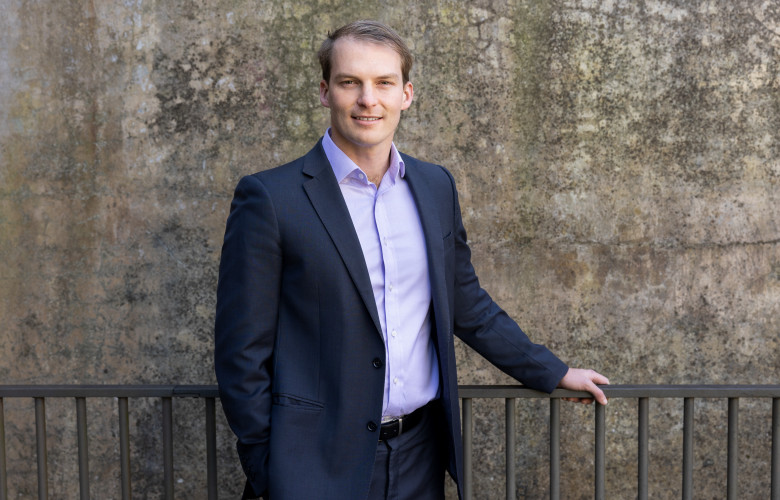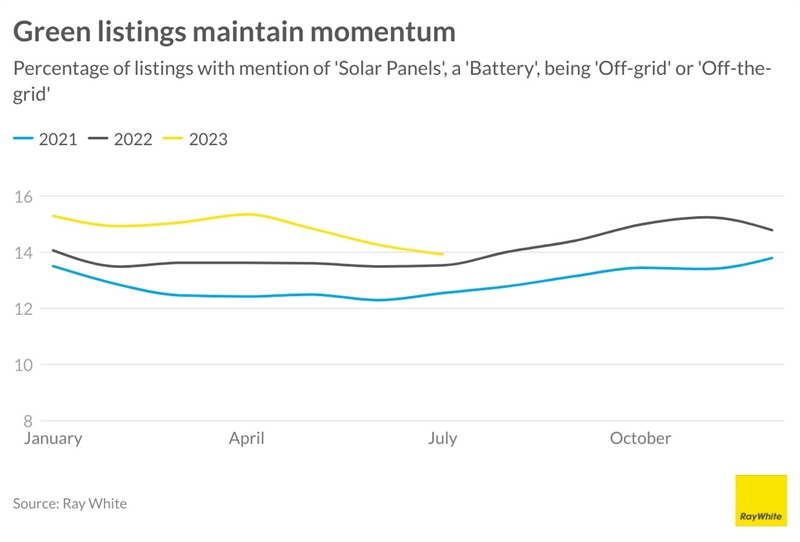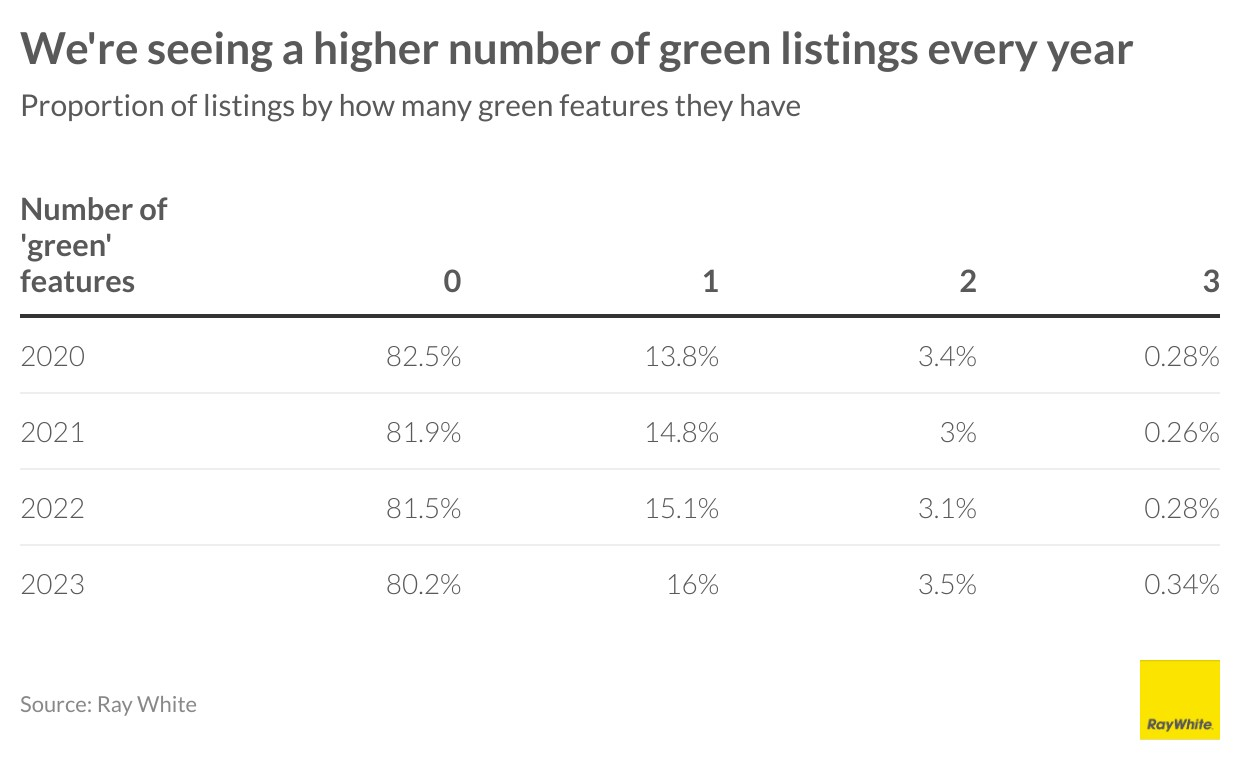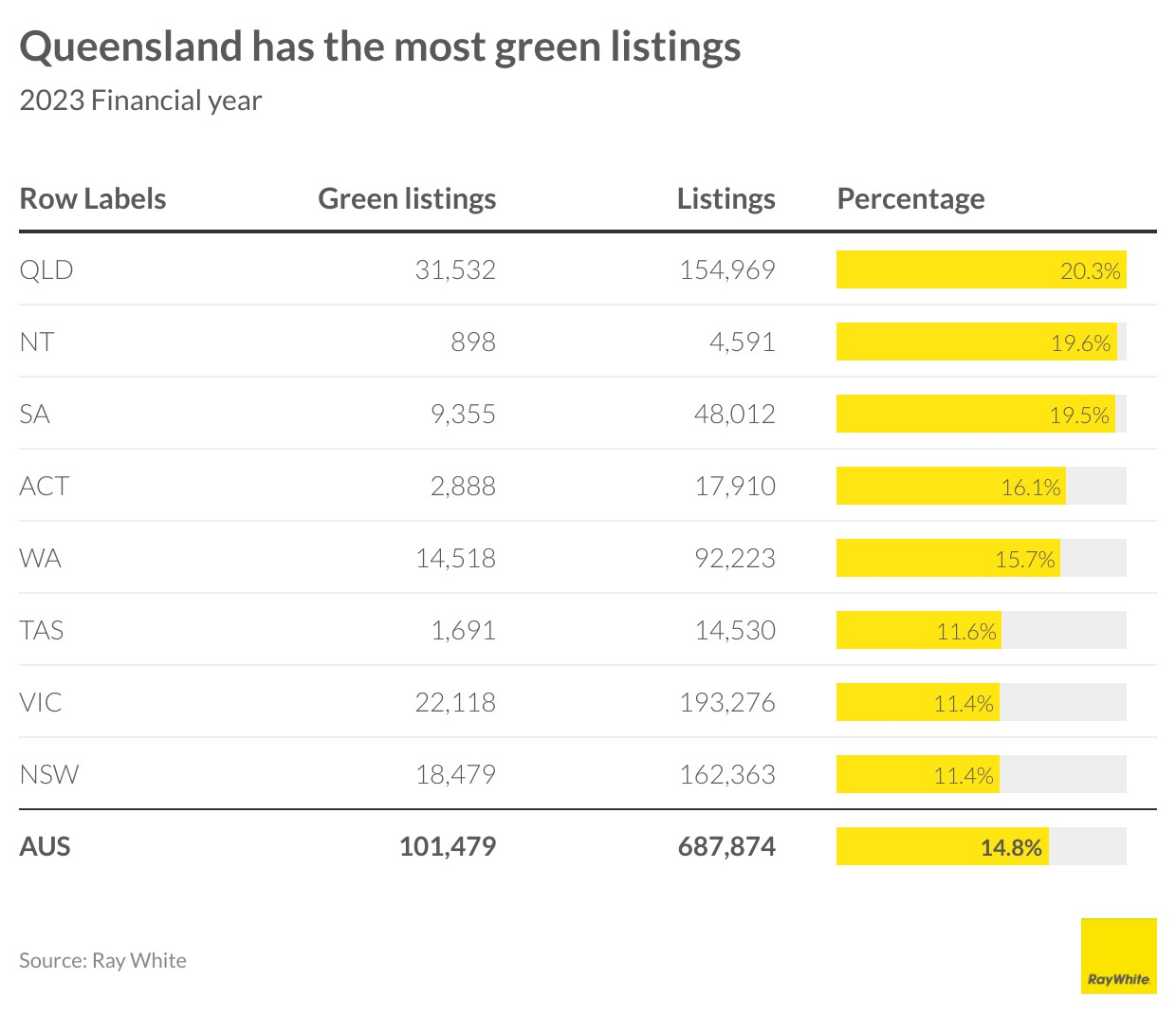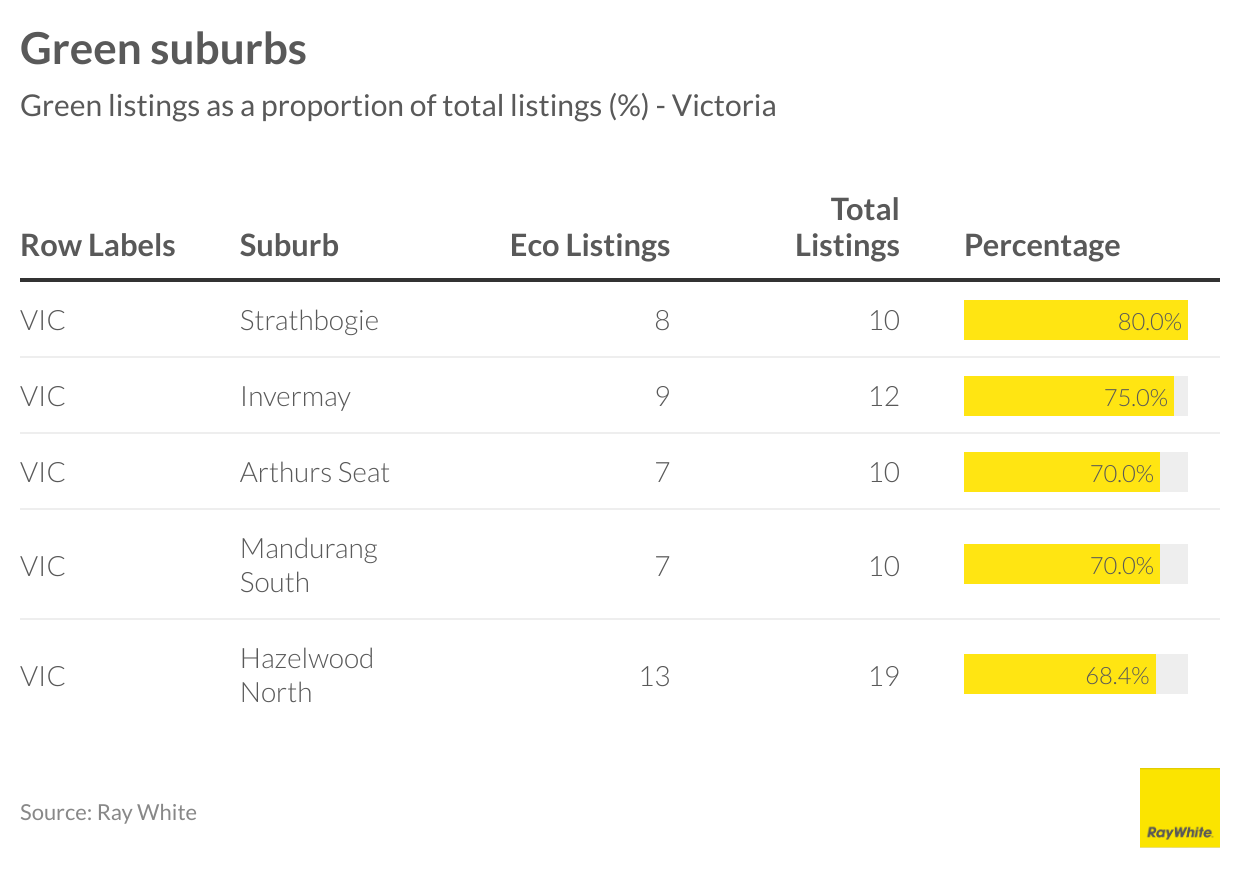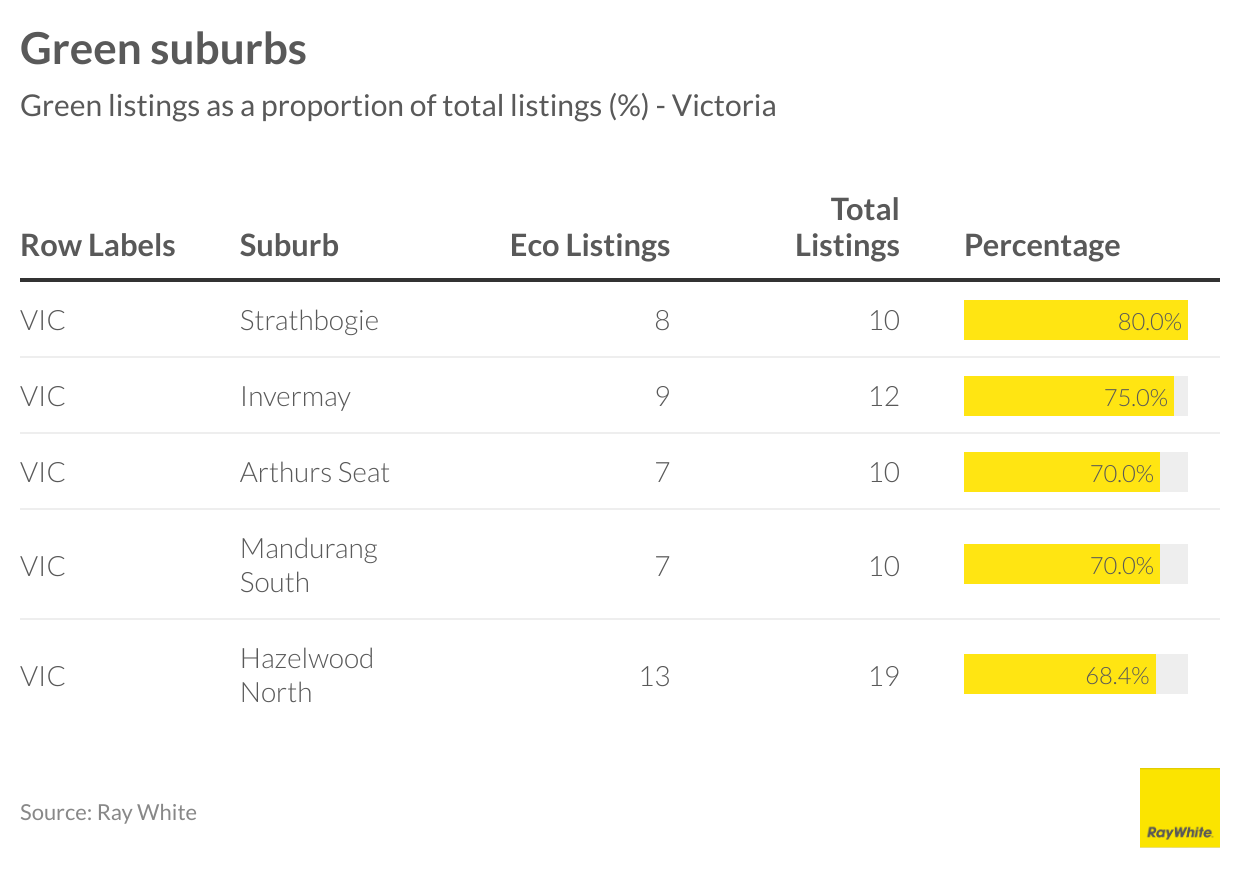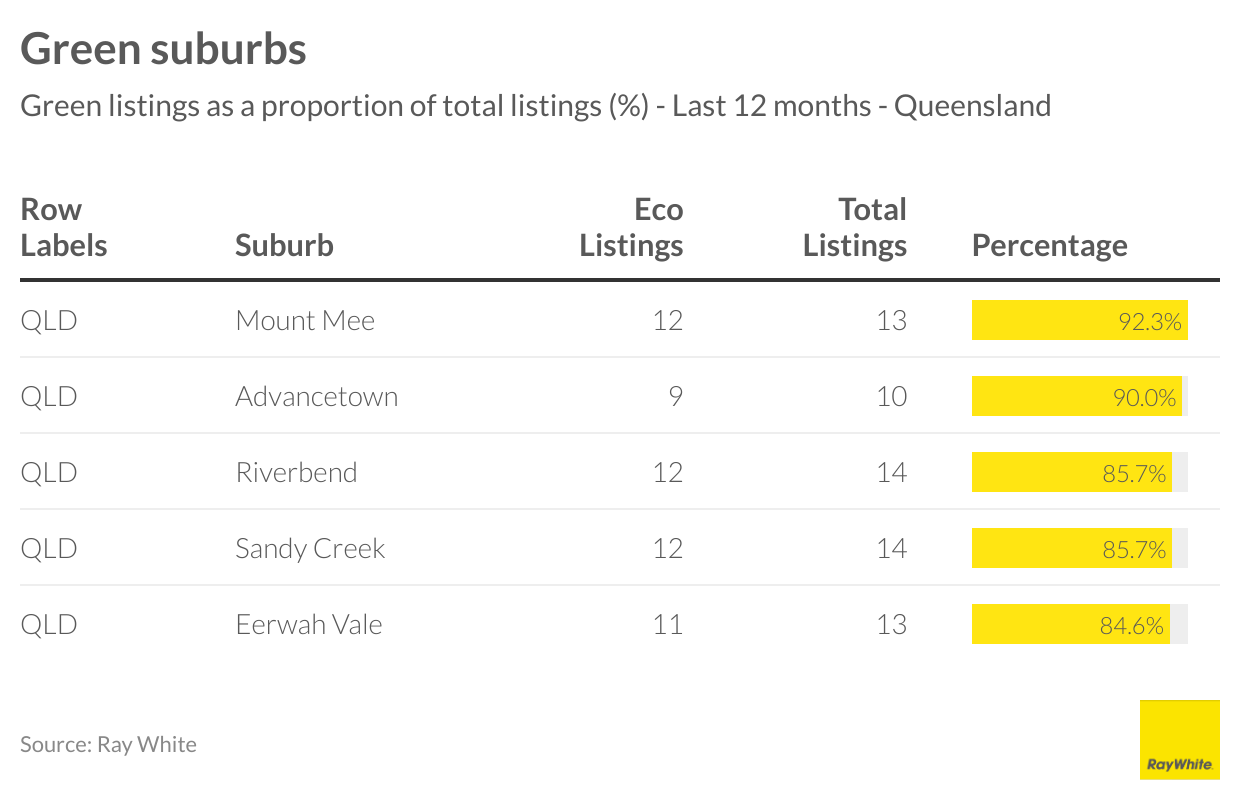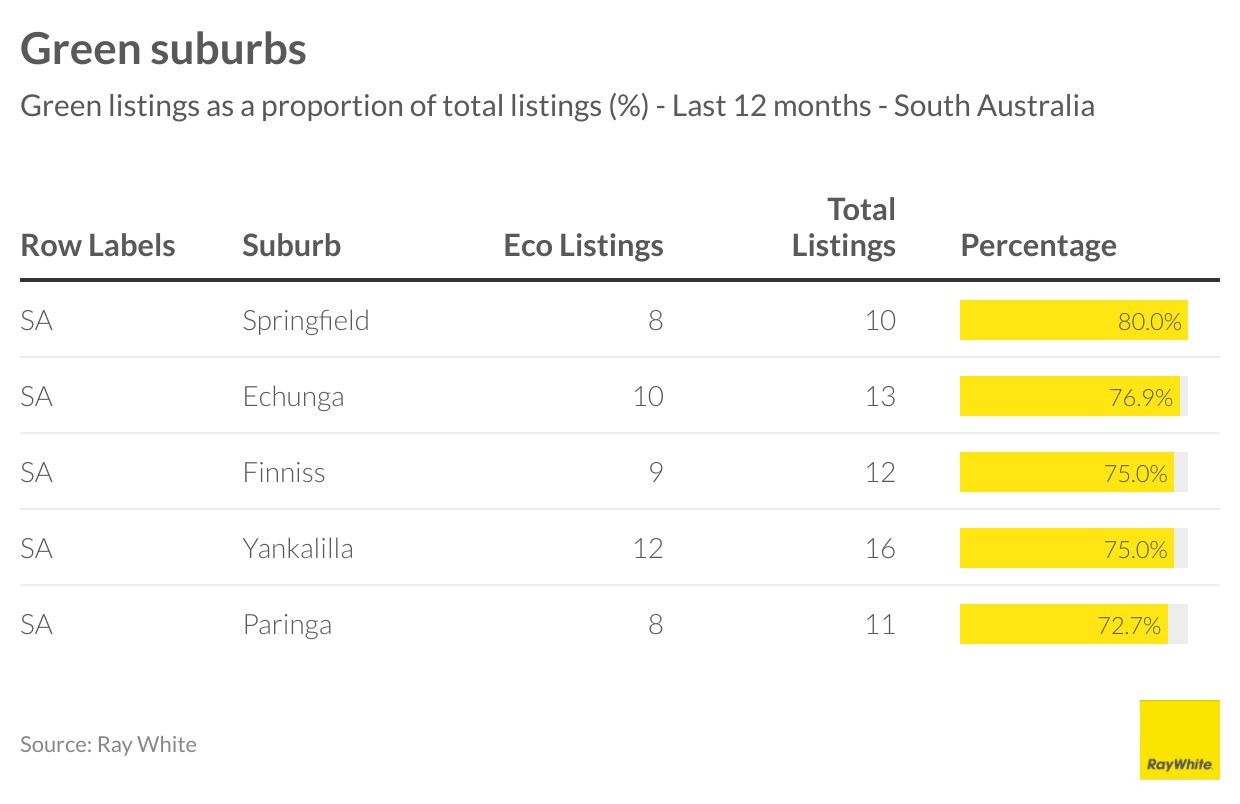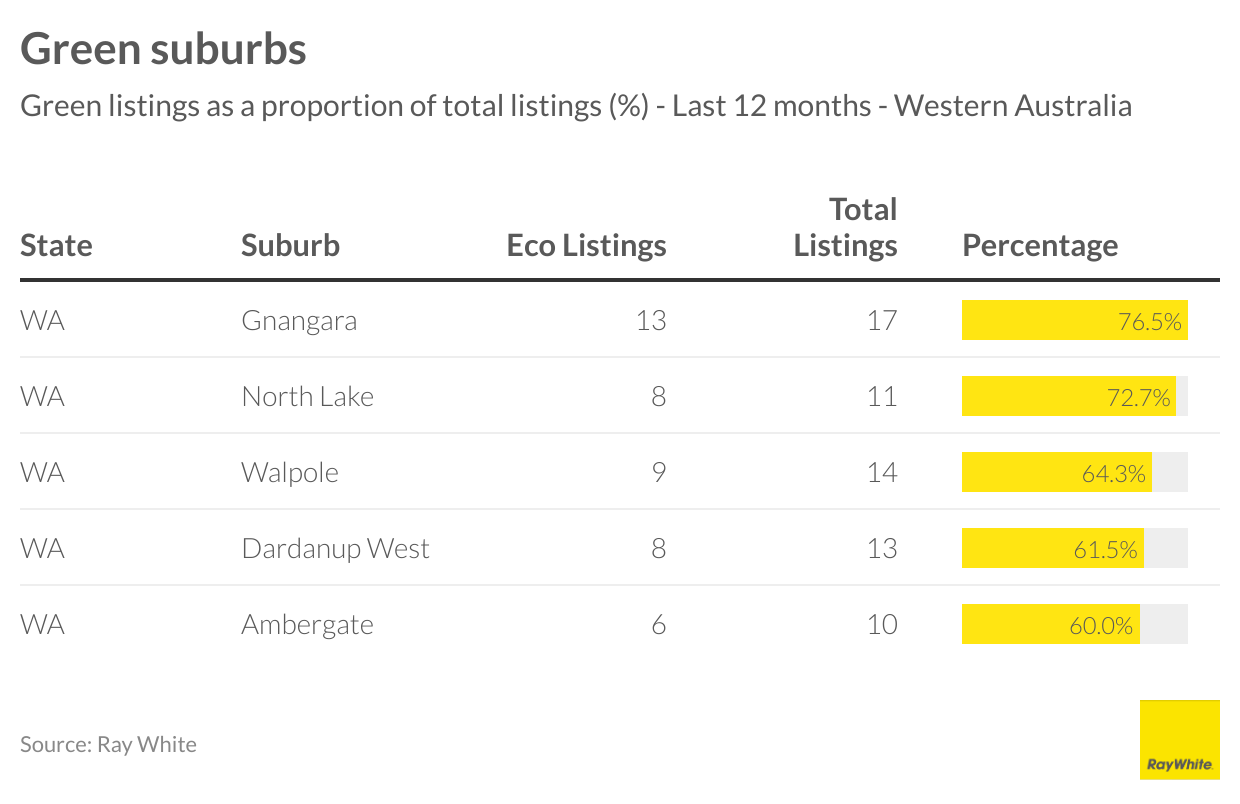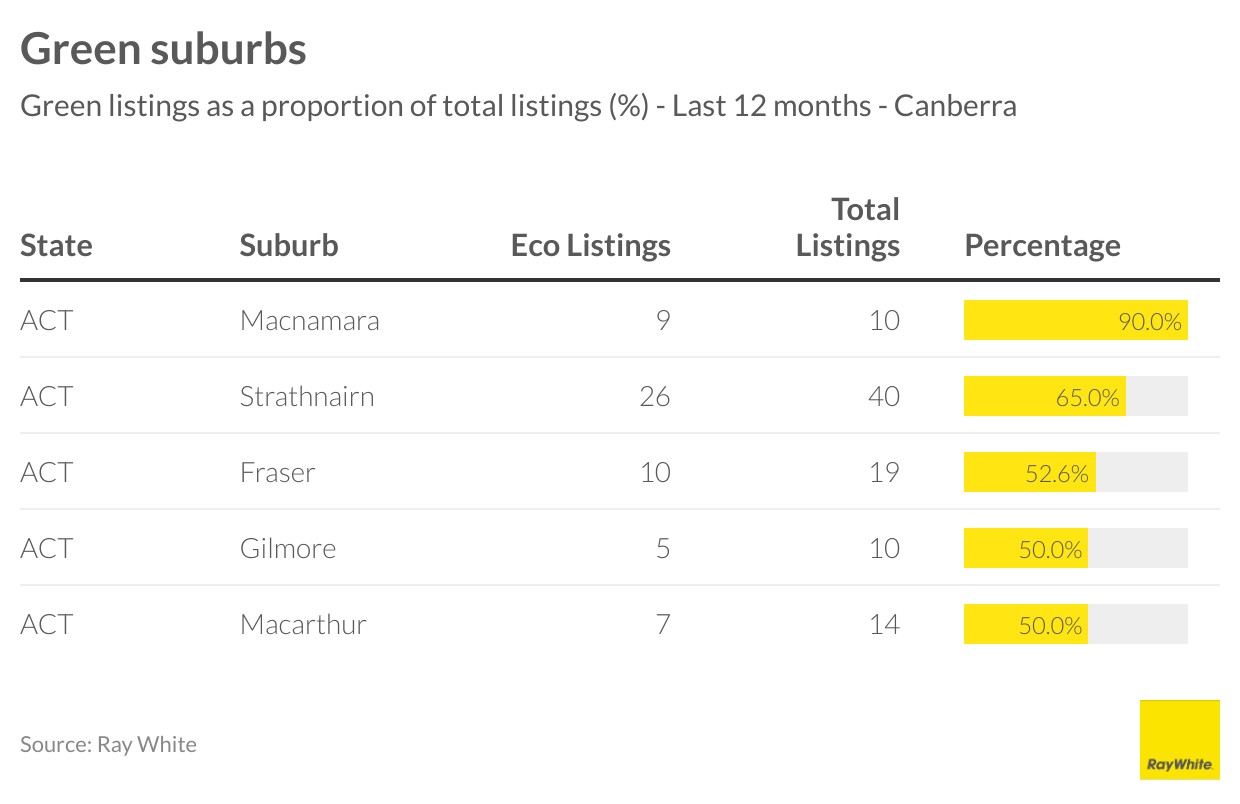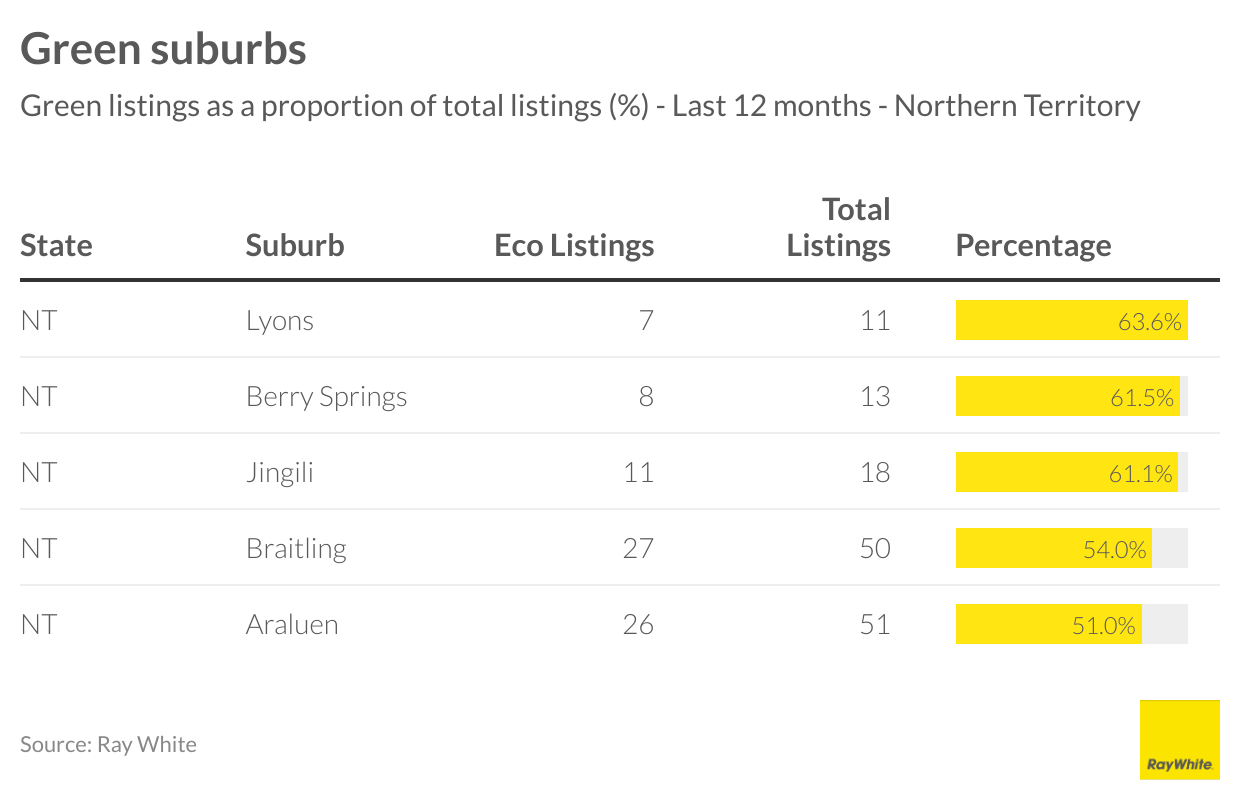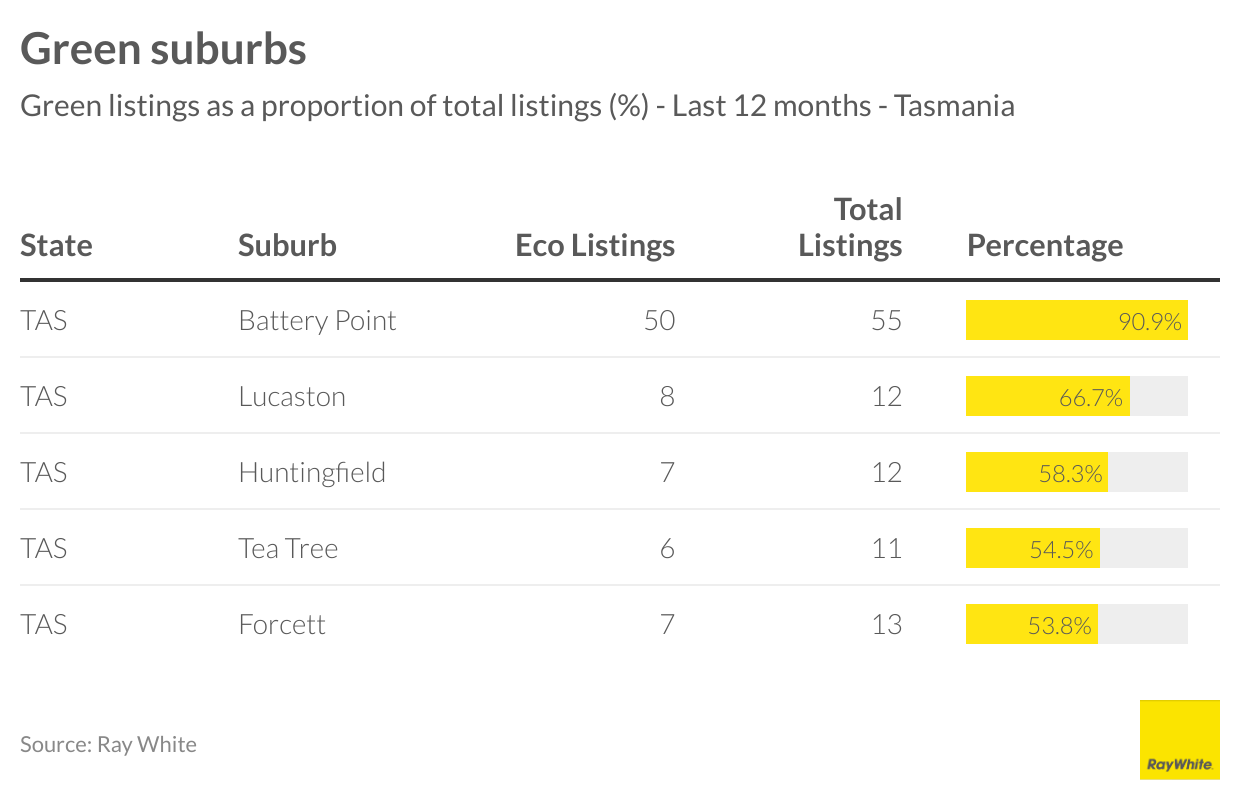Eco homes of the future - Ray White
Contact
Eco homes of the future - Ray White
In the evolving landscape of the real estate market, a new trend has emerged - ‘green listing’. There’s been a rise in advertising sustainable features such as energy or water-saving features.
In the evolving landscape of the real estate market, a new trend has emerged - ‘green listing’. There’s been a rise in advertising sustainable features such as energy or water-saving features.
Over the last three years, there has been an increasing proportion of listings with ‘solar panels’, ‘battery’ or ‘off-grid’ appearing in advertising copy. This is not an exhaustive list of ways a house can be green, however solar panels were the most frequently advertised, while batteries and being off-grid make a house green to the greatest degree.
While there has been an observable decline from an April 2023 peak, the trend over the last three years still looks strong.
Green features in housing are becoming more popular, and so the marketing of these green features is also becoming more popular. Both homeowners fitting their homes with green features, and agents training to market these features, is more frequent.
In the regulatory world, there have been changes as well. In both Victoria and Canberra there are now laws against gas connections to new builds, though for Victoria this only comes into effect in 2024. While a property’s lack of gas connection was not enough to qualify it as a green listing, it is unlikely that these laws are going to adversely affect the popularity of some of the discretionary green features such as solar heating and battery packs.
We see that most listings with green features only have one. Though it is also becoming more frequent over time to see two to four and even five green features per house. In 2023, we even saw eight listings with five green features.
These kinds of green listings are more likely to require large lot sizes to accommodate an ‘off-the-grid’ existence and large rainwater tanks. Large lot sizes will necessarily exclude places in the inner-city and other high-density areas. With regional areas having a higher proportion of houses rather than units, single-family dwellings may retrofit green features such as solar panels and battery packs quicker and more autonomously than units and complexes with large strata groups. This means states, cities and suburbs with more houses and fewer units will see a higher proportion of green listings.
There’s no denying that all states have sufficient physical space to support more properties with rainwater tanks and a self-powered grid, but we saw in the results that Queensland, with large amounts of wealth along the coast, had the most green listings. Meanwhile, New South Wales had a lot of ground to cover in last place. As the industry modernises and more laws are put in place, will 2024 see even more green listings?
NEW SOUTH WALES
While having the lowest green proportion of all listings, New South Wales had many standouts. All these suburbs are, unsurprisingly, located outside Sydney. Jiggi, in the Northern Rivers region of North New South Wales, takes out the top spot in the state for green listings.
VICTORIA
In Victoria too, it appears as though regional suburbs are leading the way with green features. Regional houses are much more likely to have rainwater tanks, making many of these listings green as a result. Victoria is with New South Wales and Tasmania in having fewer than 12 per cent green listings, while all other states have more than 15 per cent.
QUEENSLAND
Queensland has the highest proportion of green listings, with areas in Moreton Bay, Gold Coast and Sunshine Coast heavily featuring in the list of greenest suburbs. Taking out the top spot was Mount Mee in Moreton Bay.
SOUTH AUSTRALIA
South Australia’s green suburbs are a mix of both Adelaide and regional suburbs. South Australia’s green listings proportion of nearly one in five puts it near the top of the state rankings. This is despite over 75 per cent of South Australia’s population living in Adelaide. This suggests that precious few large, regional lots naturally have many green features like a water tank. However, South Australia’s high proportion of houses rather than units means lot sizes are still large.
WESTERN AUSTRALIA
Western Australia’s green suburbs are both within and without the Perth city limits. Perth has some of the lower-density properties allowing for more listings to support green features such as water tanks. A high proportion of houses also means fewer strata groups potentially obstructing the retrofitting of features like solar panels and battery packs.
AUSTRALIAN CAPITAL TERRITORY
In Canberra, the suburb of Macnamara took out the top spot. ACT is unique in that barring less than 20 listings a year, all listings are in the city, and so all green listings are technically in the city. This naturally suppresses the proportion of green listings when there’s no regional area bringing up green listings. Offsetting this unique phenomenon is that the ACT has very progressive laws. It is currently the only state or territory with a current ban on gas connections in new builds.
NORTHERN TERRITORY
In the Northern Territory, Lyons is the greenest suburb, with a mix of both Darwin and regional suburbs making up the rest of the list. Northern Territory is the second greenest state or territory in terms of residential listings.
TASMANIA
Battery point is by far the greenest suburb in Tasmania, with 91 per cent of listings being classed as green. Despite having one of the greenest suburbs in the country, Tasmania is one of the least ‘green’ states by residential listings, having less than 12 per cent of listings classed as green.

